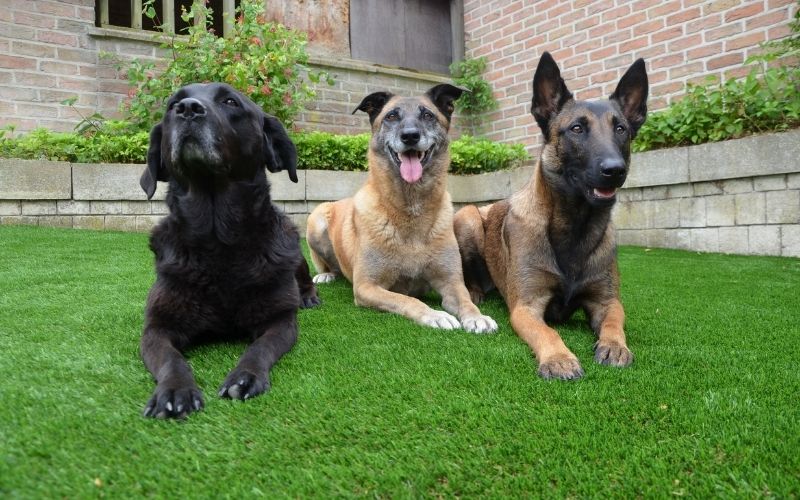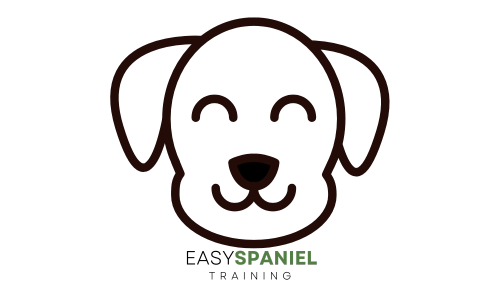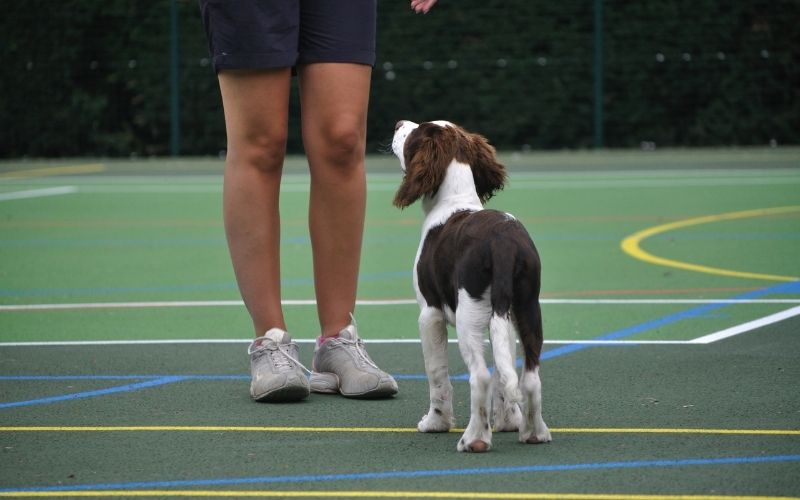When you train a dog you are really infuencing his mind to get him to do things that you either need or would like him to do.
This could be anything from hunting and retrieving for a working dog, playing fetch with a pet, sitting and coming back when told and many other activities or tasks.
As a responsible dog owner you will want to try and make sure that your dog is well behaved and is a pleasant companion to have around you and others.
Dog training is not difficult and is well within the scope of most owners. With a little understanding of the principles you can have a good dog that is a pleasure to be with.

How do dogs learn?
Dogs and puppies learn quickly. It is important to develop a relationship with your dog as soon as he comes home and one of the best ways to do this is via training.
Your dog learns, like a child, by repetition and consistency.
When you train with your dog you should always try to make the exercise as easy as possible in the early stages, gradually increasing the difficulty as your dog gets better.
Training sessions should always be short, interesting and fun. If either you or your dog are tired or unwell, then take a day off, it won’t do any harm.

Always end any session on a positive note. If you are trying something that is new to the dog and he isn’t ‘getting it’ then finish with something that he can do.
Keep your sessions positive and reward him when he gets things right.
[amazon box=”1607748916,0761168850,0307461300″ grid=”3″]
1. Association
When you start training your dog doesn’t have a clue what you are talking about. He is a dog and you are a human. Your words are babbling noise to him.
In order for you to make any sort of progress with his training you have to help him to associate your words with an action.
A classic example is the command to ‘sit’. This is easy to teach. At mealtime, hold your dog’s food up in one hand and say ‘sit’. With your other hand hold your palm outwards ( like a stop signal).

Now your dog will get frustrated at not getting his food, but, after a few moments will sit down to think about his next move. As soon as he does, repeat the word ‘sit’ and give him his food.
A bit of consistency at every meal time and soon your dog will sit when you tell him.
This is a classic example of association and is the path that you need to take when training your dog.
2. Consistency
You have to be absolutely consistent with your dog.
If you and other family members give the dog different commands or adopt different standards then you will confuse the poor animal and he will become a nervous wreck that learns nothing ( other than humans are unpredictable and incapable of training dogs maybe).
If you are consistent then your dog training will be so much easier.

It is important that everyone in the household follows the same pattern with the dog so that he understands what is acceptable and what isn’t and so that he knows what is expected of him.
Commands should be the same for everyone and also the rules of the house should be consistent too.
For example if there is a rule of no dogs on the beds and one person allows this, then your dog will be confused.
Dogs appreciate consistency and the security that it provides, it helps them to fit into family life and they enjoy that structure that it offers.
[amazon box=”1641523433″ template=”horizontal”]
3. Repetition
Just as it is with children you need to constantly repeat yourself with a dog.
Dogs learn at different rates and some dogs are better at picking up some tasks and commands than others – just like children.
You need to be patient and give your dog as much time as he needs to grow and develop both physically and mentally so that he is able to do the training and to understand it.
Little and often is the best approach with short sessions that gradually become more difficult.

Don’t be tempted to progress or move onto more interesting things before your dog has grasped the basics.
Remember that your dog wants to please you and, if he gets it wrong that he has not done it on purpose.
Dogs have very little concept of right and wrong and, if he makes a mistake, that is exactly what it is , a mistake.
He has probably become distracted by an interesting smell or similar.
Don’t get frustrated, try again and be patient with him.
4. Reinforcement
When novice dog trainers see this they often think of discipline.
You don’t need to be harsh with a dog. The concept and value of reinforcement in dog training is based around rewards.
When your dog does something right, reward him. Praise, stroking and edible treats are all great options to show him just how pleased you are with what he did.

For those that might disagree ask yourself how a lion trainer teaches his big cats? Does he give them a treat when they do well, or does he beat them when they don’t? The term into the lion’s den takes on a new meaning if you believe the latter. Lunchtime for pussy me thinks!
Hand signals are also valuable to assist your dog.
Just as with the sit command and the raised hand, you can use hand signals in addition to verbal commands to help your dog to understand.
[amazon box=”B00HG25RQM” template=”horizontal”]
5. Maintenance
Dog training does not end when you have reached the end of your programme or when you go home from a dog training class.
It never ends and is an activity that you will need to perform frequently with your dog.
Maintenance is a bit like continual development for your dog. You review exercises, trying new things, introducing them into play sessions.
The best dogs and the ones that are the most well behaved are the ones that understand what is acceptable and what the boundaries are.

Allow your dog to meet new people and animals and expand and develop his knowledge.
Get some training books to help you to explore new areas of dog training and exercises that you can do with your pet.
Do some form of training on a daily basis, even if it is just a game of fetch in the garden.
Have some fun with him and the more time you invest the better the dog he will be.
If you enjoy dog training classes then consider joining an advanced group or do some training with a friend or someone that is more experienced than you.
Final Words
There’s no need to panic when training a dog, you just need to take your time and do your best to understand what the process is.
Dog training is also about training the owner. The more that you know and understand , the better equipped you will be for training your dog.
Keep sessions short and interesting, be consistent, and always be positive.

